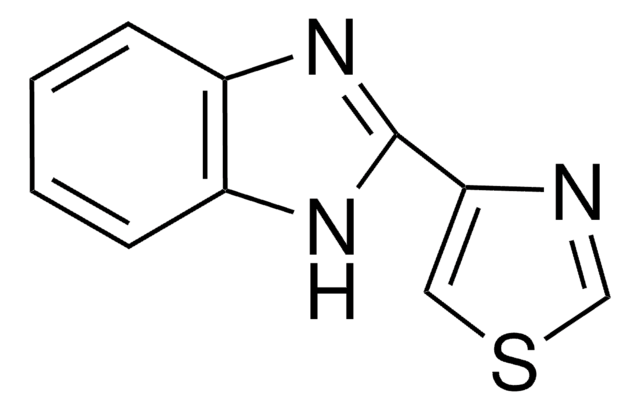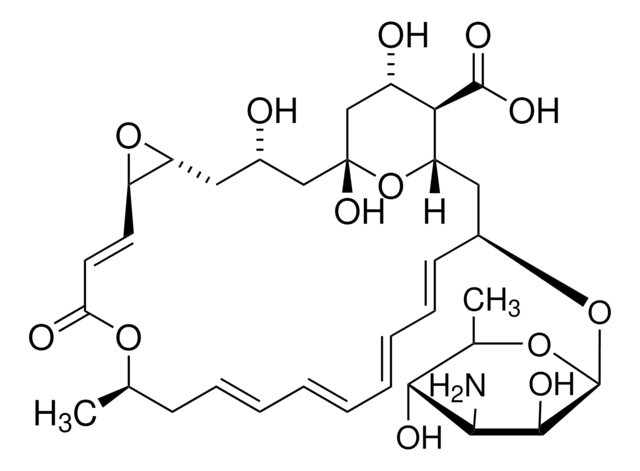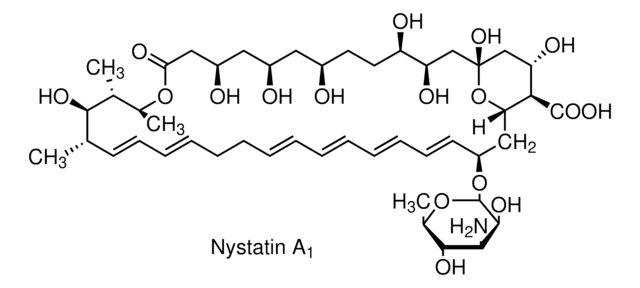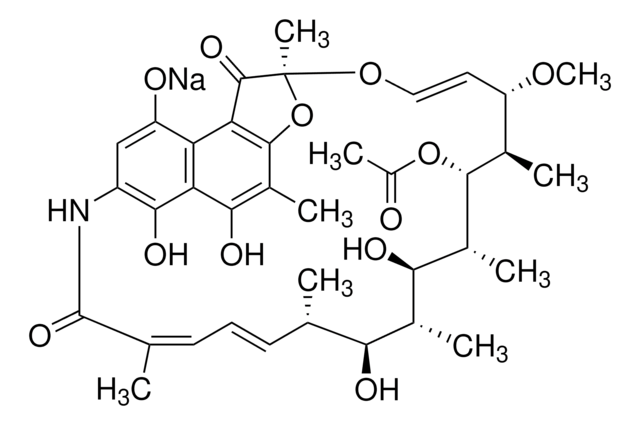Key Documents
P8556
Pentachloronitrobenzene
suitable for plant cell culture, BioReagent, ≥94% (GC), powder
Synonim(y):
PCNB, Quintozene
About This Item
Polecane produkty
linia produktu
BioReagent
Próba
≥94% (GC)
Postać
crystalline powder
powder
metody
cell culture | plant: suitable
mp
140-143 °C (lit.)
rozpuszczalność
toluene: 50 mg/mL, clear, faintly to slightly yellow
gęstość
1.718 g/cm3 at 25 °C
spektrum działania antybiotyku
fungi
Zastosowanie
agriculture
Tryb działania
DNA synthesis | interferes
ciąg SMILES
[O-][N+](=O)c1c(Cl)c(Cl)c(Cl)c(Cl)c1Cl
InChI
1S/C6Cl5NO2/c7-1-2(8)4(10)6(12(13)14)5(11)3(1)9
Klucz InChI
LKPLKUMXSAEKID-UHFFFAOYSA-N
Szukasz podobnych produktów? Odwiedź Przewodnik dotyczący porównywania produktów
Zastosowanie
Inne uwagi
Hasło ostrzegawcze
Warning
Zwroty wskazujące rodzaj zagrożenia
Zwroty wskazujące środki ostrożności
Klasyfikacja zagrożeń
Acute Tox. 4 Oral - Aquatic Acute 1 - Aquatic Chronic 1 - Skin Sens. 1
Kod klasy składowania
11 - Combustible Solids
Klasa zagrożenia wodnego (WGK)
WGK 2
Środki ochrony indywidualnej
dust mask type N95 (US), Eyeshields, Faceshields, Gloves
Certyfikaty analizy (CoA)
Poszukaj Certyfikaty analizy (CoA), wpisując numer partii/serii produktów. Numery serii i partii można znaleźć na etykiecie produktu po słowach „seria” lub „partia”.
Masz już ten produkt?
Dokumenty związane z niedawno zakupionymi produktami zostały zamieszczone w Bibliotece dokumentów.
Klienci oglądali również te produkty
Nasz zespół naukowców ma doświadczenie we wszystkich obszarach badań, w tym w naukach przyrodniczych, materiałoznawstwie, syntezie chemicznej, chromatografii, analityce i wielu innych dziedzinach.
Skontaktuj się z zespołem ds. pomocy technicznej















